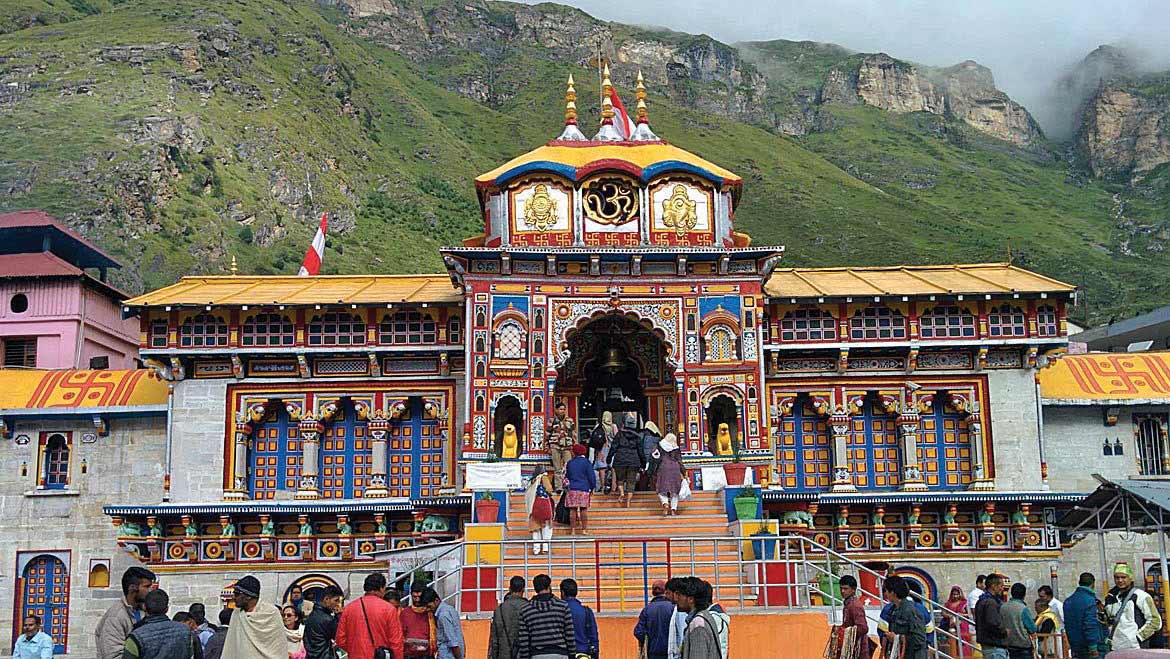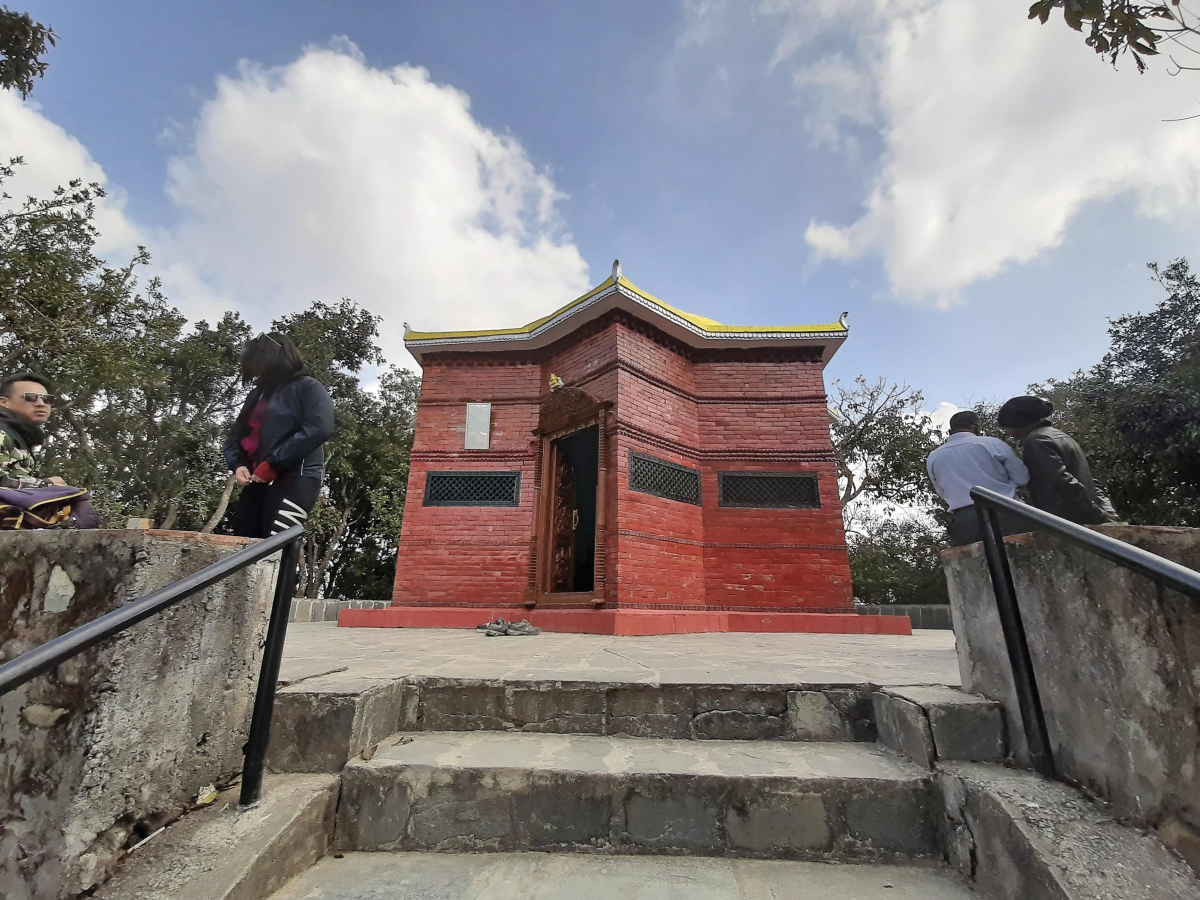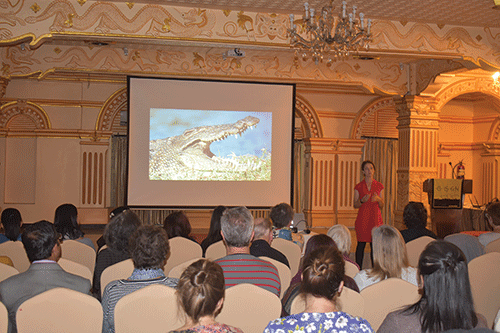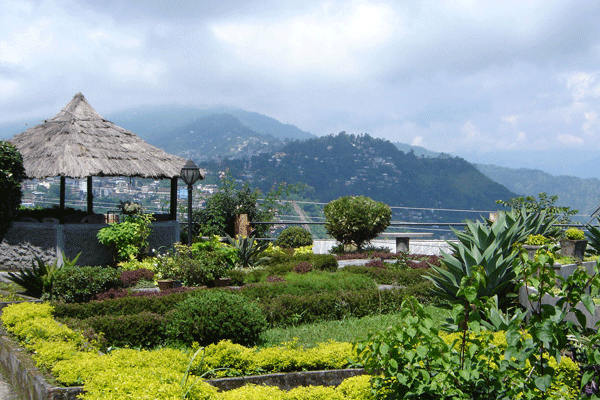
It was fortunate that a cousin’s daughter was getting married in Darjeeling. That gave me a good excuse and added incentive to make a headlong rush for the hill station. The fact that it was the place where I grew up was of course an inherent attraction. But once there, I am forced to admit that Darjeeling was not what it used to be. But, still, what with meeting long forgotten acquaintances and catching up with long lost relatives, I stayed in the town for one whole month. Then I traveled back to Siliguri to spend some days there with my sister. Siliguri is a big place; the heat is suffocating; the hustle and bustle is a bit too much; the only good thing about it is that from here one can travel to lovely places like Kalimpong, Mirik, and Gangtok very conveniently. After a week of fighting mosquitoes and battling boredom, I decided to go to Kalimpong, 70 km away, and a mere two-and-a-half hour by road.
The journey begins
The small bus meanders its way through the dark green forests of the Mahananda Wild Life Sanctuary, and then along the Teesta River, almost rock dry at the moment. Groups of small monkeys congregate at the roadsides, nonchalantly sunning themselves in the early morning sun. Soon enough, we are in Teesta bazaar and crossing the big bridge to now climb steadily upwards to Kalimpong, 16 km away. Teesta bazaar is designated as zero-mile as a distance marker for Kalimpong. Thus, the road from Teesta, as it winds up, becomes 1st mile, 2nd mile, and so on, relative to the town, with the town center being on the 10th mile. The magic, however, starts to unfold from the 1st mile itself. Now, the small and colorful wooden cottages come into view, nestled on hillocks and hills adjoining the road. The presence of these neat little houses surrounded by greenery and tall trees on all sides is a sight for sore eyes. As we approach the 8th mile, I see some of the world famous nurseries that Kalimpong is renowned for.
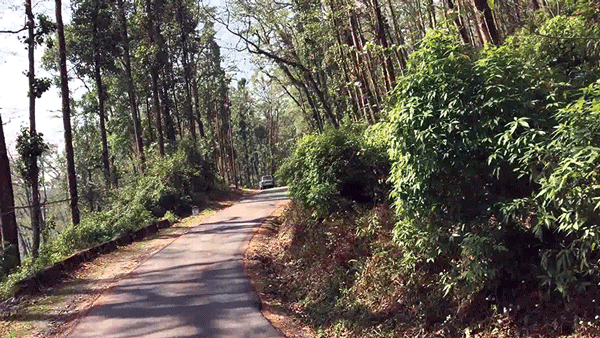
There are many nurseries in this town, and their produce are exported the world over. If one doesn’t know that Kalimpong is renowned for its flowers, then one really knows very little. The excellent weather all year round is the reason for the region being so conducive to the growing of plants of all hues and colors. As it is, Kalimpong is ensconced within verdant green mountains and lush forests, and as if that weren’t enough, nature has blessed the region with so many pretty flowers that one is treated at all times to a riot of colors everywhere one looks. And then there are the orchids—lovely blooms in various colors—that are the true treasures of Kalimpong, and much in demand all over the world. All these provide for a tranquil ambience and gives hope to my weary heart that there are still some places near to home that remain as beautiful as has always been imagined.
I get down at the busy bus stand near the town center, which is a beehive of activity. Here are located most of the shops, the restaurants, the parking lots, and the haat bazaar. Expectedly, there is the hustle and bustle of large numbers of people wandering around, and the general environment is further enhanced due to their friendly nature and bright faces. There appears to be a preponderance of youth, and this would seem appropriate keeping in mind that there are quite a few well-known schools located here. Schools like Dr. Graham’s Homes, Scottish University Missionaries’ Institution (SUMI), St. Joseph’s Convent, and St. Augustine’s, besides many other lesser known names. According to locals, education is the number one economy of Kalimpong.
Walker’s paradise
The town center is a comparatively small area, and it is but a hop, skip, and jump away from finding oneself on roads that are comfortable to walk on in quite different surroundings, in seclusion without being secluded, as one carries upwards on to 11th mile, or inversely, downwards along 9th mile. The change in setting is immediate and so dramatic that one can state with some conviction that Kalimpong is a haven for those who follow the creed of healthy living through the lively exercise of walking in a clean and unpolluted environment.
So, I decide to walk, the continuation of a favorite activity that I had practiced with gusto while in Darjeeling. My destination is near the end of the 12th mile, where an uncle and his family live. My sprightly steps soon leave the animated bazaar area behind. The traffic is light on the road. I stride forward with renewed vigor and find that although there aren’t many people on the road, a continuous line of houses and small shops are lined alongside. The landscape is fabulous—miles and miles of rolling green hills and tea gardens with colorful houses scattered at places. The air is refreshing, the weather is mild—a perfect place to take long walks. My poetic side comes to the fore and the thought goes through my mind, “Here one can walk in solitary splendor without feeling isolated.”
As I near the 12th mile, I cross the sentry-guarded Bhutan House, set amidst splendid environs. I stop nearby at a bend where, across the road, water is gushing through a thick rubber pipe down a hill and two cars are being given a wash over. Near to it is a tea stall. I sit down on a moss covered embankment and drink some of the cardamom scented tea. The only sounds are those of the drivers joking with each other and small birds twittering away among the tall bamboo trees. I am in no hurry to reach anywhere. It is a luxury I possess at the moment, and so I take my time to imbibe the rich feeling of being one with nature. I feel alive; truly alive. When visiting relatives not long before in Florida, I remember having remarked often, “Heaven can’t be any more perfect than this,” on experiencing life amidst the perfectly maintained surroundings. Now, I think, “This too is perfect, but more natural. This is it.” I don’t miss the lovely landscape of Florida anymore. I feel that now I am home among the verdant greenery and pretty flowers of Kalimpong.
_rt.gif)
Orchid Retreat
Talking of flowers, exotic plants like gladioli, orchids, cacti, amaryllis, anthuriums, roses, gerberas, dahlias, etc. are grown in a number of nurseries here. And, there is no more ideal a place to luxuriate in their beauty that at the Orchid Retreat on 12th mile, which incidentally, happens to my destination. At the risk of sounding euphoric, one must say that nature at its most beautiful can be said to exist at the Orchid Retreat. Originally (since 30 years ago), and still, the leading nursery in the region (Ganesh Mani Pradhan Nursery), and specializing particularly in orchids, ten years ago, some lovely cottages were placed among the profusion of nature’s bounty to create a retreat where one could find a virtual paradise on earth. I will be spending the next two weeks here, lodged in one of those charming cottages. How lucky can you get?
Now, let’s pause here for some smart facts: Kalimpong is located at an altitude of 1250 m, and cradled between Deolo Hill (1704 m) and Durpin Dara Hill (1402 m). Naturally, both offer fantastic views. Durpin Dara (‘Binocular Ridge’) is about 5 km southwest of the town, and from here one can get a panoramic view of the whole Chola Range of Sikkim, including the Jelep La Pass, as well as the Kanchenjunga range and Tiger Hill. Deolo Hill, besides offering as spectacular a view, also has a wonderful park and science center. On the lower slopes of Deolo Hill lies Dr. Graham's Homes, a school founded in 1900, and sprawling over 500 acres of wooded land. Boarders are housed in Scottish style cottages. The school is certainly a school like no other, and quite in tune with the ambience of the town, and its beautiful chapel is an architectural wonder.
One fine morning, after a few days of exploring the bazaar and adjoining areas, I decide that it is high time I underwent a real test of stamina. So, I decide to hike up to Deolo Hill and back. It is a long way uphill and takes me through the lovely grounds of Dr. Graham’s Homes. Near the school, and some way to the side up a hill, I notice a cemetery. Intrepid traveler that I am, I cannot resist giving it a visit. My intentions are not as noble as to pay my respects; rather, I have always believed that one can learn much about a place’s history via its cemetery. I take my time reading the head-stones, some are so old that I cannot decipher what’s written on them. Anyway, having satisfied my curiosity, I carry on climbing the road. It’s worth repeating once again, in Kalimpong one can walk in solitude without feeling isolated. Further ahead, I come across a botanical garden. I take a welcome fifteen-minute breather here. Climbing continuously uphill is a strenuous affair. The garden has an innovative display of the history of the plant kingdom, and I gather that it has been planned with an educational purpose in mind.
The Gaine and his Sarangi
It is getting pretty warm now, all that walking uphill. I crane my eyes upwards; my journey’s end seems close to the heavens. Dispelling my mounting self-doubt, I trudge on, reminding myself, “Every mile I walk, I increase my life by five minutes.” Besides, I don’t think I’ll ever find a more blissful place to walk than right here, and I’m not one to miss such an opportunity. Around the next bend, I meet a young man going my way. He is poorly dressed and carries a wooden fiddle—the famous sarangi –a traditional Nepali musical instrument. Now, my journey becomes livelier. We talk. He is going to Rongpo in Sikkim. That’s a far way on this route, but he doesn’t seem perturbed. “It’s easy for me,” he says. “If it gets dark, I’ll just request lodging and food at someone’s house.” I look surprised. He explains, “You might not have it so easy, but in the villages, everybody welcomes a gaine (singer). I’ll sing some songs in return for their hospitality.” Ah, the simplicity of his words, the simplicity of life! His words bring cheer to my heart. This is the kind of thing that uplifts me.
A dozen or so people are busy repairing the road up ahead. Sighting us, somebody shouts, “Gaine aayo! Gaine aayo!” Everyone perks up. “Sit down gaine, and sing us some songs,” one of them pleads. I feel proud to be with my new found friend. We sit on a low mound, and the workers crouch down on their haunches in a semicircle. The gaine tunes his sarangi and asks, “What would you like to hear? Folk or modern?” One of the men answers, “Let’s have a modern song.” My friend launches into a peppy tune, and I am taken aback at the range of his powerful voice. “Who would have thought?” I think, looking at him in surprise. He sings with his eyes closed and with a fervor that is impressive. Now I understand what a gaine really means. The requests keep on coming, and soon there is quite a crowd gathered, the womenfolk from nearby hamlets having joined the gathering. My friend is a rock star! Looks like he will be stuck here for some time.
Regretfully, I take leave and continue my journey alone. At last I reach the plateau. I notice some deep water reservoirs, and beyond that, an apparently well-maintained park and picnic spot. There are quite a few visitors. Right now, however, my priority is something else. I sit down at one of the roadside eateries near the gate and wolf down a couple of plates of excellent momos. Only those who have undertaken an odyssey like mine (walking uphill for hours) can understand when I say that I could literally feel the nourishment flooding through my veins. Thus fortified, I take a round of the park, which has a government tourist lodge at a vantage point. From here, I can see Kalimpong town and the Teesta River far below, as well as the surrounding villages of the Relli valley. It is all a splendid sight.
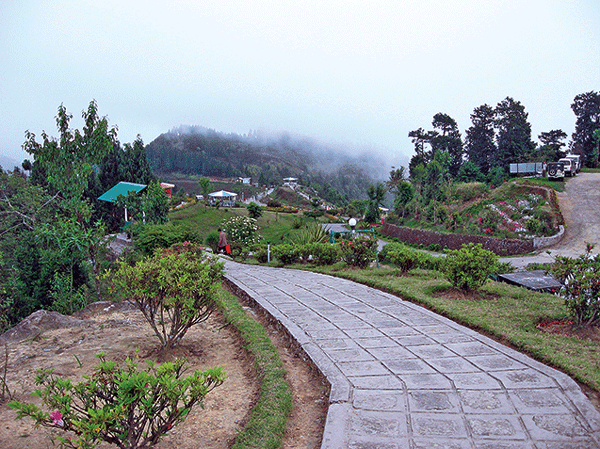
Deolo Hill’s Science Center and Park
An hour later, I walk towards the Science Center and Park some distance away. It is something I didn’t expect— really very interesting, and the best thing about it is that one can actually have hands-on experience of the exhibits on display. These are working models, experimental in nature, on various theories like gravitation, light spectrum, centrifugation, and so on. Many school children are here today, and very soon I too become one, so high is my childish enthusiasm at the wonders of science. The park outside is equally fascinating, and I have a whale of a time experimenting around with sound waves, lever mechanisms, and so forth with the other children. Having at last learnt some real science, I start walking back to town and take a circuitous route. You can imagine, the walk downhill is a cakewalk, and the scenery is beautiful. Oh, here I must not forget to mention that from atop Deolo Park, I actually saw an eagle soaring. An eagle soaring? So what, you might say. But, wait, I haven’t completed my sentence; the eagle was soaring hundreds of feet below me, and not above as is normally the case. Now, isn’t that something marvelous—to be higher than the eagles for once?
Anyway, by and by, I reach a small monastery beside which is a cave. The sign above says that some sadhu is doing tapasya (meditating) inside. Crude wooden steps lead into it. I peer into the cave, but don’t want to risk falling headlong in the darkness. I walk around it and find that the exit is only a few meters behind, so isn’t much of a cave, as such. By now, the sun is beginning to set, and near the Sherpa village, I take a short-cut on the advice of a local. Walking down the stone steps at first is pleasant enough, but I find to my surprise that the descent is taking longer than expected, and with no end in sight! I pass a couple of hamlets with pretty cottages and small gardens on the waysides, but as I reach some bamboo groves, darkness overtakes me. Let me tell you, walking down a partly forested hill in the dark is no small matter, and it becomes quite scary when going through thick patches of dense trees. But I trudge on, the sound of barking dogs giving wings to my feet. At last, I land on the asphalted road. Relieved? You bet I am. I don’t much fancy being set upon by dogs in the dark. But, as I reach the road, I look left and right, which way is 12th mile? Fortunately, I make the correct decision and finally reach the Orchid Retreat. Oh, the quantity of food I devoured that evening! Oh, the depths of sleep I plunged into that blessed night!
That wonderful day of hiking up to Deolo Hill capped a perfect two weeks of my blissful stay in Kalimpong. I am sure all that walking must have added at least an hour or two to my lifespan, but more important, my heart was filled anew with a whole new spirit of life.


